History of Dulwich Hospital
St. Saviour’s Union Infirmary (a workhouse hospital) was was built in 1885 in East Dulwich Grove. It was designed by local architects, Henry Jarvis & Sons, and opened in 1887 with a capacity of 723 beds. The infirmary was constructed with a pavilion layout: a large administrative block with two wings was flanked on either side by a pair of three-storey wards in the Florence Nightingale style. The twenty four wards contained 26-30 beds along with a two-bed isolation ward. In 1902, the hospital was renamed the Southwark Union Infirmary.
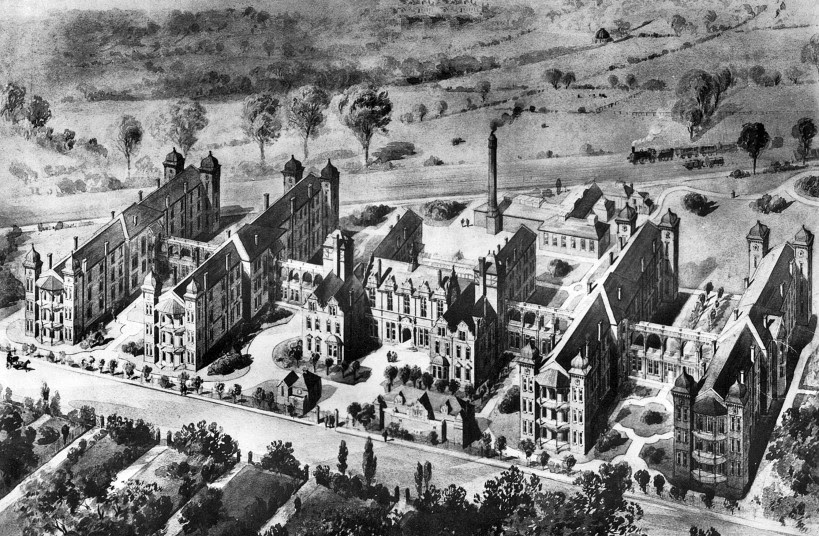
During World War I, the infirmary was requisitioned by the War Office and transformed into Southwark Military Hospital. The number of beds was increased to 820 and about 12,522 wounded soldiers passed through the hospital, of whom only 199 died.
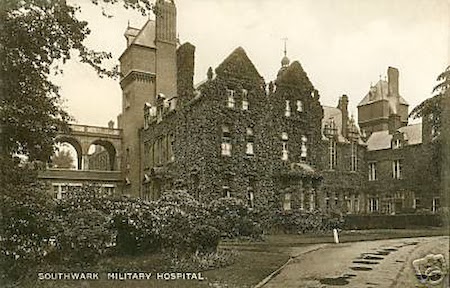
After the war, the hospital was returned to the Guardians of the Poor of the Parish of Southwark and was renamed the Southwark Hospital in 1921. In 1931, after the abolition of the Poor Law in 1930, the London County Council took over administrative control of the hospital which was renamed Dulwich Hospital. The number of beds was reduced to 423 and several additional facilities were built including a new operating theatre, pharmacy and new boiler house. During World War 2, Dulwich Hospital never received a direct hit from any bombs, although several explored nearby.
Dulwich Hospital was closed in 2006 and in 2006 the eastern wards were demolished to make way for a new community hospital. Plans for the new hospital underwent many revisions and experienced many delays. In 2013, plans were still being discussed and the existing buildings were being assessed as to their suitability for incorporation into a modern health care facility. The remaining buildings were in a poor state of repair and would require major refurbishment. Two attempts to secure heritage protection for the buildings have failed as they were not “considered sufficiently unusual or significant to justify this protection.” Others have argued that the “surviving buildings are of significant historic and architectural interest worthy of reassessment for statutory listing.”
Josef Jakobs: A Patient at Dulwich Hospital
Josef Jakobs was taken to Dulwich Hospital on February 3, 1941. Having been captured on February 1 with a broken ankle, Josef had received initial treatment at Brixton Prison Infirmary. Unfortunately, Josef’s injury was so severe that it required treatment at a regular hospital facility.
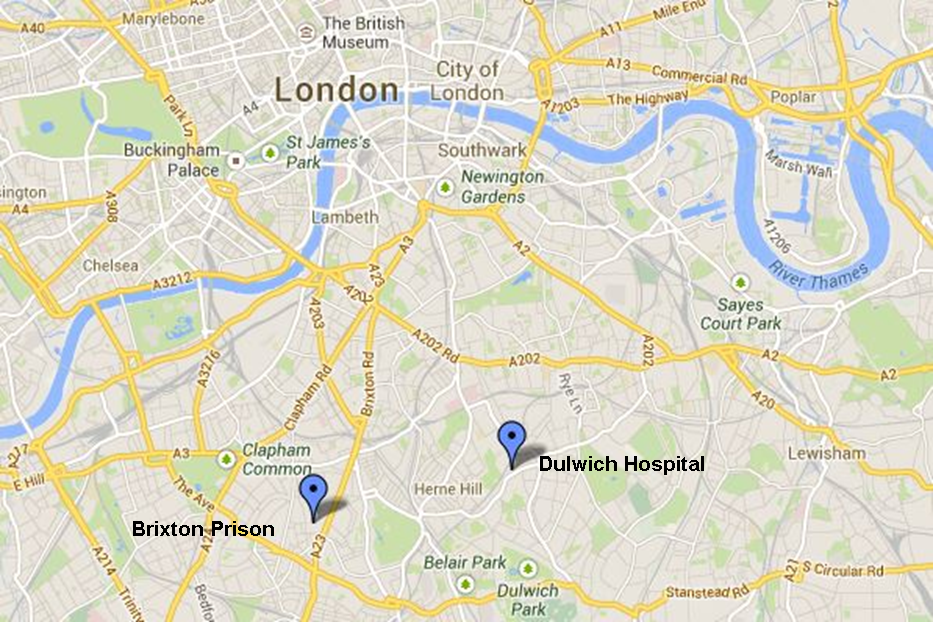
Since secrecy was paramount in the case of captured German spies, Josef was admitted to Dulwich Hospital with the cover story that he was a Prisoner of War, a German airman who had ejected from his aircraft and injured his ankle upon landing.
Upon arrival at Dulwich Hospital, Josef’s ankle and chest were x-rayed. The doctors noted that Josef had a Potts Fracture with a “comminuted fracture of the tibia and fibia”. Essentially, his ankle had been rolled inwards and he had a shattered lower leg.
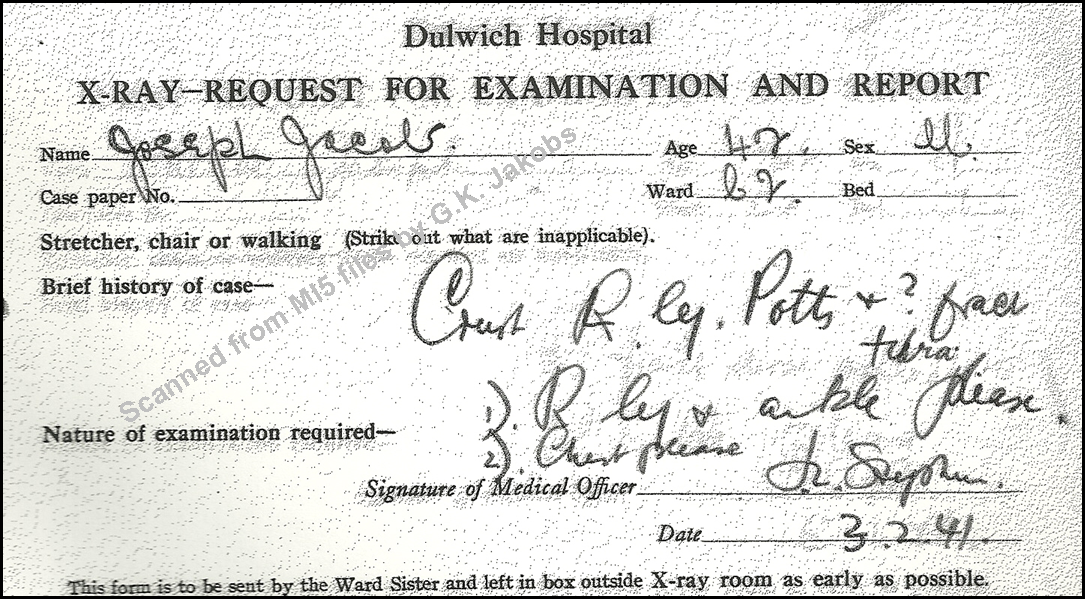
The doctors operated on Josef’s leg under general anaesthetic and placed it in plaster. During his recovery, Josef was placed in Ward C2 behind a screen to separate him from the other patients. Over the next week, Josef’s leg was placed in traction and received fresh plaster every day. In mid-February, Josef developed a temperature (102.5 F) and an septic infection at the site of his ankle injury which was treated with sulfanilamide. Over the next 6 weeks, Josef’s ankle slowly improved.
Release from Hospital
Josef was released from Dulwich Hospital to Ham Common (Latchmere House) on March 26, 1941. A day or two later, Josef had a relapse and was transferred to Brixton Prison Hospital where he remained until April 15, 1941 when he was transferred back to Ham Common.
Summary
Josef clearly received excellent treatment at Dulwich Hospital. The doctors did their best for him and for his badly fractured leg. While the officers at the interrogation camp at Latchmere House (Ham Common) were eager to question Josef, the doctors at Dulwich Hospital were most concerned with saving his leg and life.
Update 3 April 2019
Sue Badman of The Dulwich Society kindly sent an update on the Dulwich Hospital site:
The Dulwich Hospital site now comprises a large secondary school “The Charter School East Dulwich” (since January 2019) and will also have a community health hub from next year. The central “chateau” building is preserved as is the WW1 cross (now listed) commemorating WW1 soldiers at the hospital.
Update 2021
I published a couple of more recent blogs on the physicians and one nurse from Dulwich Hospital who cared for Josef Jakobs.
Doctors of Dulwich Hospital
Nurse Ellen English from Dulwich Hospital
References
The Dulwich Society – Whither the Dulwich Hospital Site? by Sue Badman.
The Dulwich Society – The Future of Dulwich Hospital by Bill Higman.
Lost Hospitals of London: Dulwich Hospital
National Archives, Kew – MI5 files on Josef Jakobs.
Header Image – “Dulwich Hospital” by Reading Tom is licensed under CC BY 2.0
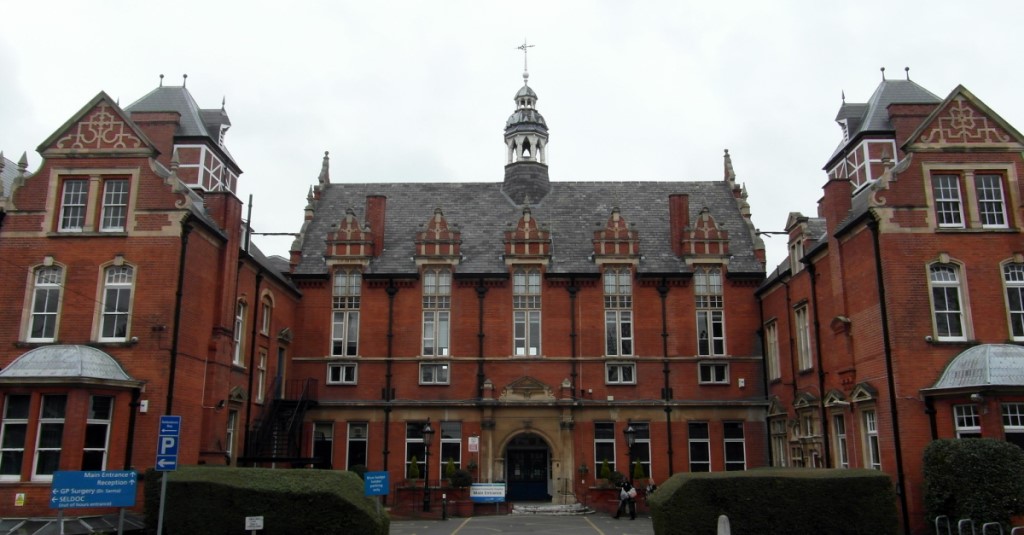
Further to my article cited above "Whither the Dulwich Hospital site?",I can report that the Dulwich Hospital site now comprises a large secondary school "The Charter School East Dulwich" (since January 2019) and will also have a community health hub from next year. The central "chateau" building is preserved as is the WW1 cross (now listed) commemorating WW1 soldiers at the hospital.
Thanks Sue! This is helpful information.
I found this very interesting as I was searching for the Dulwich Nurses’ Home (& separate Medics Home for on call Registrars), opposite the back side entrance to the hospital; there was also a nurses quarter inside Dulwich Hospital tucked away up some steps.
It homed a fair few nurses.
There was a small cafe type hatch inside hospital (turn right of main entrance)to left of long corridor nearing the nurses quarters end.
So many vivid memories of happy nursing days.
There was a back gate exit near some wooded area where coning home late one night we passed a group of Satan worshippers in long white gowns.
Never ran so fast in our lives.
Hi! Thanks so much for the comment. That’s a cool memory of the Dulwich Hospital. No so sure I like the satan worshipers being so close. I bet you ran super fast!!